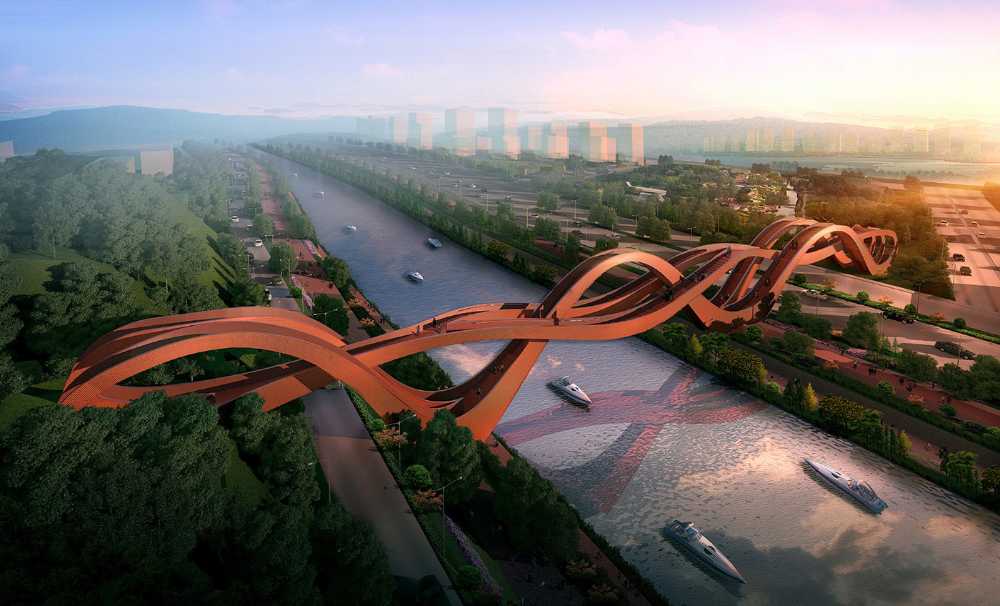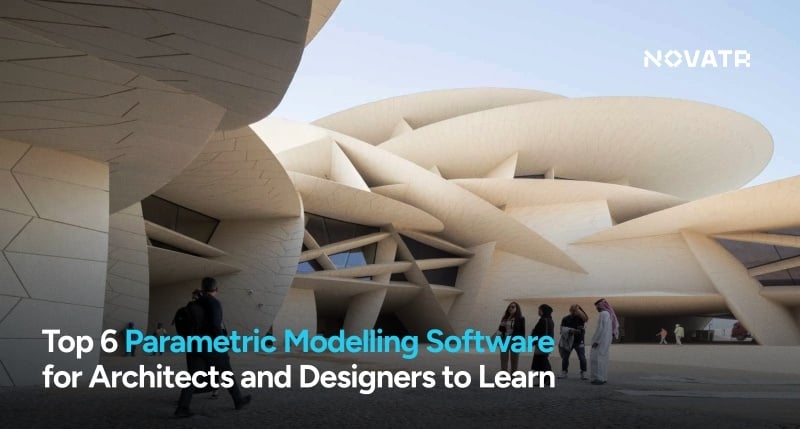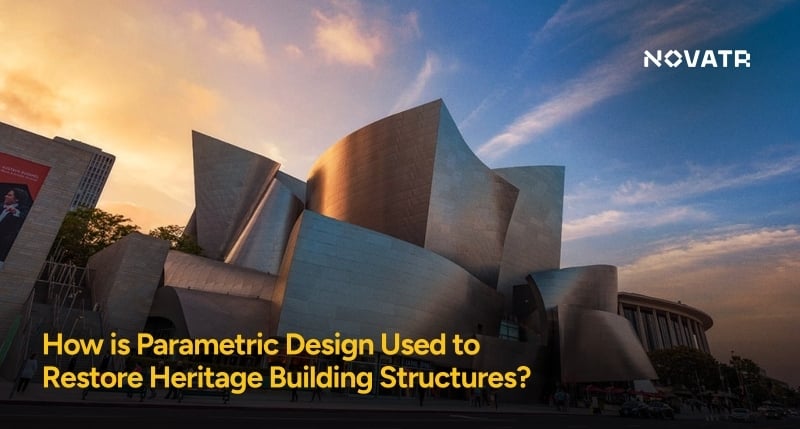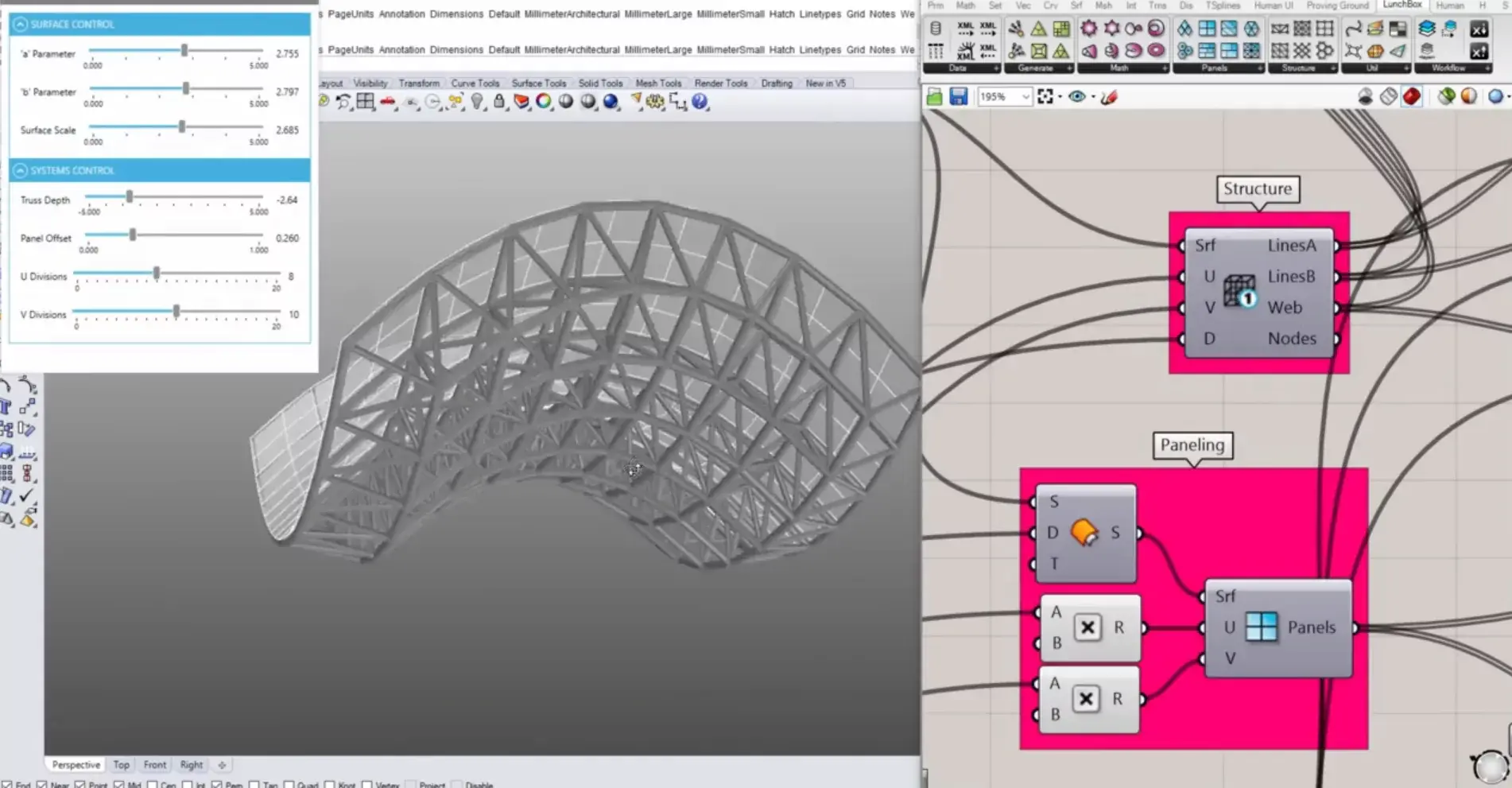
What is Parametric Modelling?
Bridges – these magnificent megastructures, that connect lands separated by rivers, gorges, highways, or even bays, stand as symbols of human innovation and collaboration. They don't merely serve as utilitarian passages, they can embody art, engineering brilliance, and our spirit to overcome geographical divides. They bind cultures, enable commerce, and in their own quiet way, reflect the intricate web of connectivity that weaves our world together.
What is the Traditional Way of Constructing Bridges?
Conventionally, the process of bridge design and construction is labour-intensive. Designers and engineers create detailed drawings and structural layouts with material specifications to develop accurate designs. Building materials like wood, stone, or iron are historically used for enhanced strength and durability. However, the traditional ways of work are more time-consuming and need impeccable human attention as they are prone to error.
Read More : 10 Impressive Parametric Buildings From Around The World
What is Parametric Modelling?
Parametric modelling is a design process that uses a set of parameters to create complex 3D models. It allows for dynamic and systematic modifications based on predefined parameters. Designers can establish relationships between various elements of the model, enabling them to easily alter dimensions, shapes, or other attributes while maintaining design coherence. This method provides flexibility and efficiency, particularly in complex projects where coordination and communication can be a significant concern. Revit, Rhino, Grasshopper, Dynamo, ArchiCAD, and Solidworks are some of the most widely used software for parametric bridge design and construction.
Why Use Parametric Modelling for Bridge Design and Construction?
The complex and interconnected nature of bridge structures demands a high degree of flexibility and adaptability during the design phase. Parametric modelling allows engineers to define key parameters such as span length, load-bearing capacity, and material properties, establishing a dynamic framework that facilitates adjustments. Parametric modelling for bridge design is particularly crucial when addressing site-specific challenges or accommodating changes in design requirements. The ability to iteratively refine the model in response to evolving constraints ensures that the final bridge design is not only structurally sound but also optimised for efficiency and budget.
Also Read : 10 Best Examples of Parametric Pavilion Around the World
How is Parametric Modelling Beneficial for Bridge Design?
Parametric modelling is a new-age technology that aids design thinking as well as construction. Below is a detailed insight into how parametric modelling helps Architecture, Engineering, and Construction (AEC) professionals with bridge design.
1. Enhanced Design Visualisation
Parametric modelling enables professionals to create designs more quickly and efficiently when compared to traditional methods. The ability to adjust and experiment with various parameters in real time accelerates the design process. By instantly visualising how changes affect the final design, architects can make informed decisions and iterate rapidly. This not only saves time but also encourages innovative thinking and problem-solving.
2. Complex Design Handling
Parametric modelling for bridge design allows designers to explore unconventional bridge shapes and forms that might be extremely challenging to achieve with manual design tools. It enables professionals to experiment with unique structural systems, materials, and mechanisms that were otherwise difficult to integrate earlier. As a result, parametric modelling expands the realm of what's achievable in design and engineering, fostering creativity and uniqueness.
Also Read: How To Use Tekla For Bridge Modelling?
3. Cost Savings
The use of parametric modelling allows for the early identification of potential design flaws and structural issues. By simulating various scenarios and conducting performance analyses, designers can mitigate risks and make necessary adjustments before construction begins. This proactive approach reduces the likelihood of costly design errors and modifications during construction, leading to significant cost savings over the life of the project.
4. Sustainability
Parametric modelling helps in creating environment-friendly structures by analysing the performance of designs under various conditions. This data-driven approach enables architects and engineers to optimise their designs for efficiency, structural integrity, and environmental impact. By fine-tuning designs to minimise waste, reduce material usage, and maximise energy efficiency, parametric modelling for bridge design contributes to more sustainable and eco-friendly projects.
5. Real-time Collaboration
Parametric modelling software facilitates real-time collaboration among multidisciplinary teams. Engineers, architects, and other stakeholders can work together on a digital platform, sharing and reviewing design iterations, making it easier to address issues and arrive at a consensus. This collaborative approach streamlines the decision-making process and minimises miscommunication, ultimately leading to more efficient project execution.
Read More : Top 6 Parametric Modelling Software for Architects and Designers to Learn
3 Best Examples of Bridge Design Built Using Parametric Modelling
Parametric modelling is redefining the way bridges are designed and constructed. It is ushering in a new era of modern infrastructure that is more efficient, aesthetic, and durable. Let’s look at some of the most innovative examples of bridge design achieved with parametric modelling.
1. The Millau Viaduct, France

Designed by renowned architects Norman Foster and Michel Virlogeux, The Millau Viaduct, is a cable-stayed bridge that stretches across the Tarn River valley in the Massif Central region, France. With a central span measuring 342 metres (1,122 feet), it is one of the tallest and most elegant cable-stayed bridges, standing at an impressive height of 270 metres (886 feet) above the valley.
The use of parametric modelling allowed the designers to optimise the bridge's geometry, including the precise shape of the piers and the configuration of the cable-stay system, enabling them to make real-time adjustments and fine-tune the design for maximum structural efficiency and aesthetics. This resulted in the construction of a bridge that not only blends with its natural surroundings but also efficiently distributes the load while minimising the use of materials.
2. The Ruyi Bridge, China

The Ruyi Bridge, located in Zhejiang, China, is a beautiful piece of architecture that showcases the fusion of modern design and traditional Chinese aesthetics. This picturesque bridge spans 100 metres, standing 140 metres above the Shenxianju Valley. Built as a tourist attraction, the man behind the bridge, He Yunchang, also created the iconic Bird’s Nest Stadium in Beijing.
The bridge showcases a graceful, sweeping arch that resembles a traditional Chinese Ruyi sceptre, a symbol of good fortune and prosperity, that was constructed using parametric design principles. This allowed for the optimisation of the bridge's shape and structural integrity while maintaining its symbolic significance, serving not only its functional purpose but also paying homage to Chinese culture and tradition.
3. The Chunhua Pedestrian Bridge, China

The Chunhua Pedestrian Bridge, situated in Shenzhen, China, serves as a vital pedestrian link, connecting the bustling urban areas of the city, providing not only a practical transportation route but also an iconic landmark within the city. It was designed by Tang Hua Architects, to be built at a cost of $7.8 million and stretching 130 metres across Chuangye Road, featuring 13 elevators and six staircases.
The Chunhua Pedestrian Bridge boasts a distinctive double-helix structure with intertwined spirals that provide both aesthetic appeal and structural stability. By employing parametric bridge design concepts, architects and engineers were able to optimise the bridge's complex geometry, ensuring that it could support the weight of pedestrians while maintaining its intricate, helical form.
Read More : 10 Parametric Design Firms in India to Look Out For
In Conclusion
The future of bridge design lies in the hands of professionals who can harness the power of parametric modelling. It is paving the way for structures that stand as testaments to human ingenuity and the seamless integration of art and engineering.
If you wish to create iconic bridges, we recommend you learn parametric modelling. You can check out the Master Computational Design Course by Novatr which can provide you with a comprehensive understanding of parametric software, tools and their applications. Explore the course today!
Was this content helpful to you











